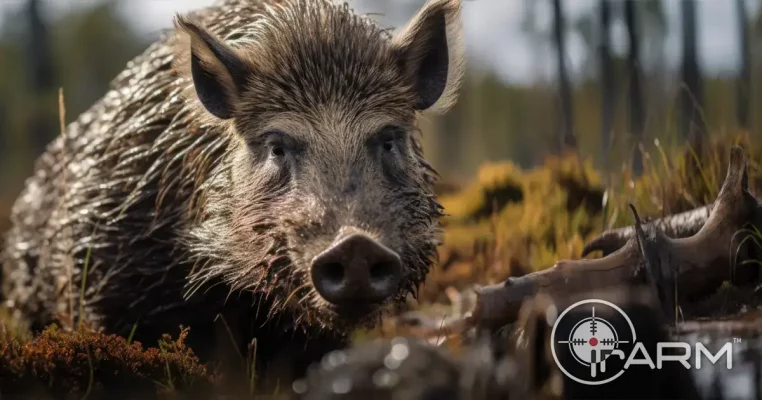
How Do You Hunt Hogs?
Part 1: Getting Ready Because feral hogs are a non-native species that compete for food with wildlife and livestock and
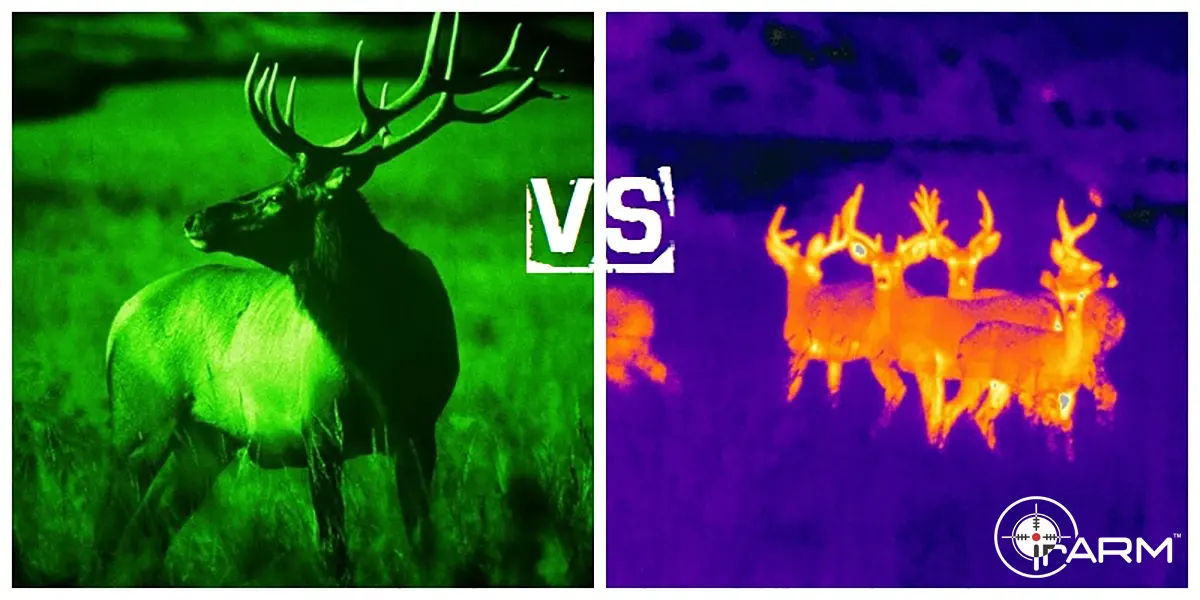

PhD in Optics, is an expert in the field of gun scopes and thermal optics with years of experience and numerous publications in academic journals.
When it comes to night vision and thermal imaging, they both have their own advantages and limitations. In this article, we’ll explore how both of these technologies work, and which one would work better in rainy weather conditions. Additionally, we’ll discuss the important factors to consider when deciding whether to use night vision optics or thermal imaging devices.
Night vision (NV) technology captures and enhances weak night light that is reflected from objects. The lenses of a night vision device can capture the most inefficient light radiation that is invisible to the naked eye. The collected light then enters the photocathode, where it is converted into electrons. These electrons enter the microchannel plate and cause an additional emission of electrons, leading to an increase in the amount of energy.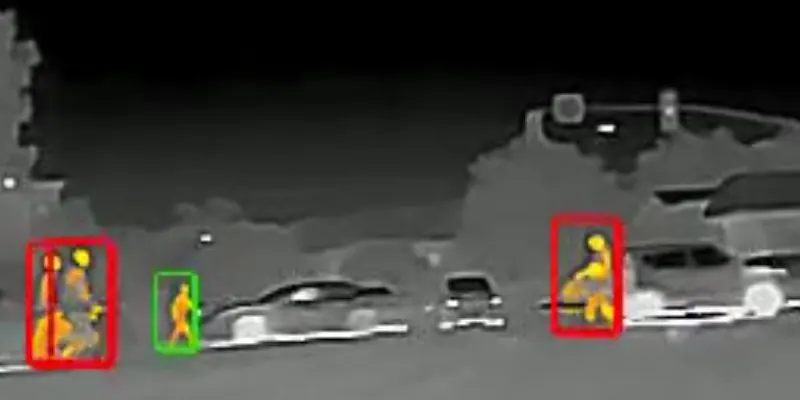
On the other hand, thermal imaging (TV) technology works based on the property of any object with a temperature above absolute zero to emit thermal energy. In simpler terms, you can measure the temperature of any object, even a cold one. All thermal imaging devices are capable of recording this temperature. The lenses of a thermal imager can capture minor heat radiation, and the thermal sensor can measure and the processor processes the data to form a heat map of the area to which the device is directed.
When it comes to using NV and TV in rainy weather, both have their own strengths and weaknesses. In the case of night vision devices, the light reflected from objects travels a distance from the subject to the lens of the night vision goggles. For a perfect image, nothing should interfere with the passage of light photons. However, in reality, light travels in the atmosphere, not in a vacuum. Impurities of gases, dust, and the smallest particles of water will interfere with the passage of light, creating the effect of partial absorption of light by the atmosphere and causing the photons to scatter. The clearer the air and less saturated with water vapor, the more precise the image on the screen. However, if it’s raining, each particle of water will interfere with the passage of photons of light, creating visual “noise” on the monitor of the night vision monocular. The reflectivity of the water is very high, and the more it rains, the denser the “noise” on the screen looks. Sometimes, it’s almost impossible to see anything due to the thick wall of rain while using a night vision device. In this case, it is much more effective to use any thermal imaging equipment instead of night vision devices.
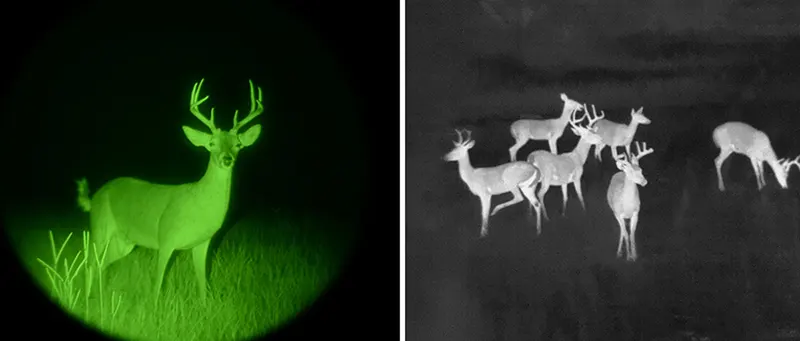
Thirdly, we take into account the purpose of observation. If you need to detect the presence of a living organism at a great distance, then it is better to use thermal imaging devices. They work well in detecting the presence of warm-blooded animals, birds, and people. In contrast, night vision devices are better at detecting objects that emit weak reflected light, such as buildings, cars, and other structures.
When it comes to choosing between night vision and thermal imaging equipment, several factors should be considered, including the task, environment, and weather conditions. In rainy weather, irARM™‘s thermal imaging equipment is the more effective option, detecting temperature differences even through light rain. For clear, dry conditions, night vision equipment may be more suitable. It’s crucial to weigh all factors when selecting an observation device to achieve optimal results, and irARM™ offers quality options for both technologies.

Part 1: Getting Ready Because feral hogs are a non-native species that compete for food with wildlife and livestock and
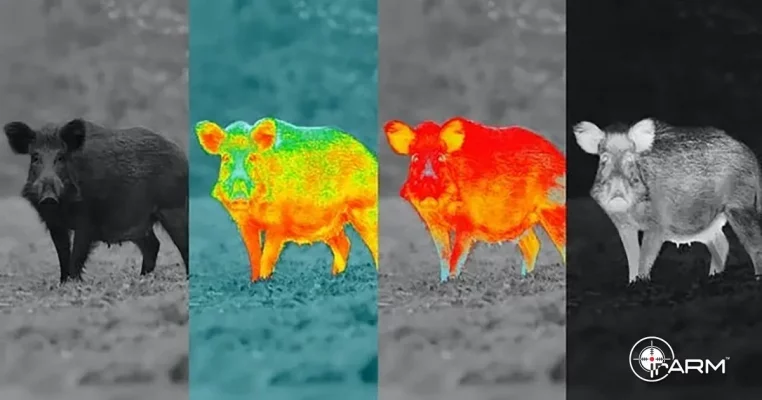
In the realm of hunting, few pursuits are as thrilling and challenging as tracking and taking down the formidable wild
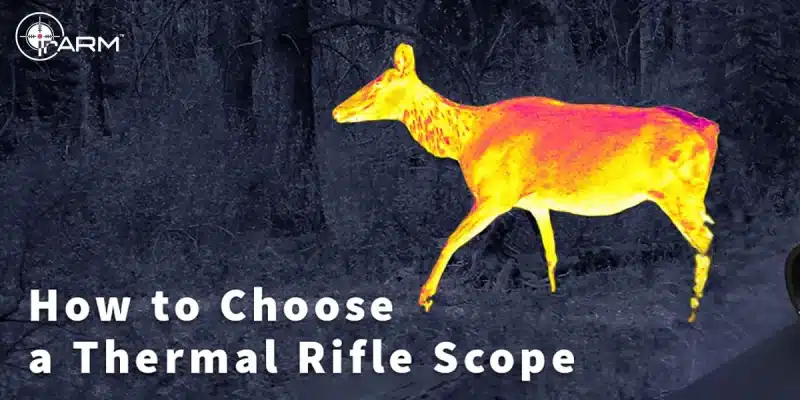
Introduction: Thermal scopes have revolutionized the way hunters, law enforcement professionals, and outdoor enthusiasts approach their activities. Unlike traditional scopes,
irARM™ makes high-quality thermal scopes and cores for outdoor enthusiasts, hunters, and law enforcement. irARM™ is the trusted option for those seeking dependable thermal imaging solutions.
Subscribe to Receive News and Promotions from irARM’s marketing team.
